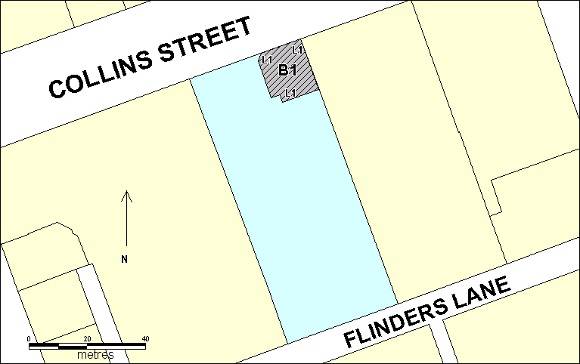| Back to search results » | Back to search page » |
|
WINFIELD BUILDING
Location487-495 COLLINS STREET MELBOURNE, MELBOURNE CITY
File Number10/030451-01LevelRegistered |
|
Statement of Significance
What is significant? The Winfield Building, formerly the Wool Exchange building, 487-495 Collins Street, was erected in 1891. It became known as the Winfield Building from the mid 1920s. The architects were Charles D’Ebro and Richard Speight jnr. It is believed to have been built for J R Murphy, owner of Murphy’s brewery. Part of the financing for the building came from the architect and his father, Richard Speight Snr, a commissioner of the Victorian Railways. From 1892 to 1894 the building was Melbourne's first amalgamated wool exchange and incorporated an auction hall which brought together all the Melbourne wool sales. Other tenants in the rear stores included the Melbourne Chilled Butter Company and Melbourne Cool Storage Co. The front section to Collins Street is all that remains of the original, much larger complex. The rear of the Winfield Building was replaced by a fourteen storey extension in 1984, part of the redevelopment of the site as a hotel. The four storey building with a facade to Collins Street was built as two ground level shops with offices overhead. It is constructed of brick on a bluestone plinth and cement render mouldings. It is in the English Queen Anne style, reflecting the architectural influence of Richard Norman Shaw in England. The corner treatment echoes the adjacent Rialto building, being splayed and crowned by a conical turret. Characteristic of the Queen Anne style is the steep pediment at roof level, reminiscent of Flemish gables and penetrated by windows. Also contributing to the style is the banded cement contrasting to the face red brickwork and the wide variety of window treatments. The dormer windows and decorative iron ridgework add further interest to the variegated and picturesque roofline. How is it significant? The Winfield Building is of architectural and historical significance to the State of Victoria. Why is it significant? The Winfield Building is architecturally significant as one of the best examples of the Queen Anne style in Victoria. In contrast to the Gothic and classical modes, the Queen Anne style was employed only sparingly for Victoria’s commercial buildings in the 1890s. However, the style was well suited to the flamboyant and confident designs favoured by commercial developers during the so-called ‘boom period’. It is one of architect Charles D’Ebro’s finest buildings. The Winfield Building is architecturally significant for its unique spatial relationship to the adjacent Rialto building, with which it formed a narrow laneway. Together they form an integral part of the exceptional block of late Victorian ‘boom’ period buildings in Collins Street. The Winfield Building is historically significant as the location of the amalgamated Wool Exchange. The wool industry and its stores was a dominant force in the west part of the city and the Winfield Building became a focal point for the industry from the early 1890s. The Winfield Building is historically significant as a demonstration of the building boom in Melbourne during the early 1890s, shortly before the economic depression halted building for most of the decade. The design demonstrates the new approach to office accommodation, being specifically planned for a range of commercial tenants and with shops to the ground floor of the street facade.
Group
Finance
Category
Commodity/ Stock Exchange








